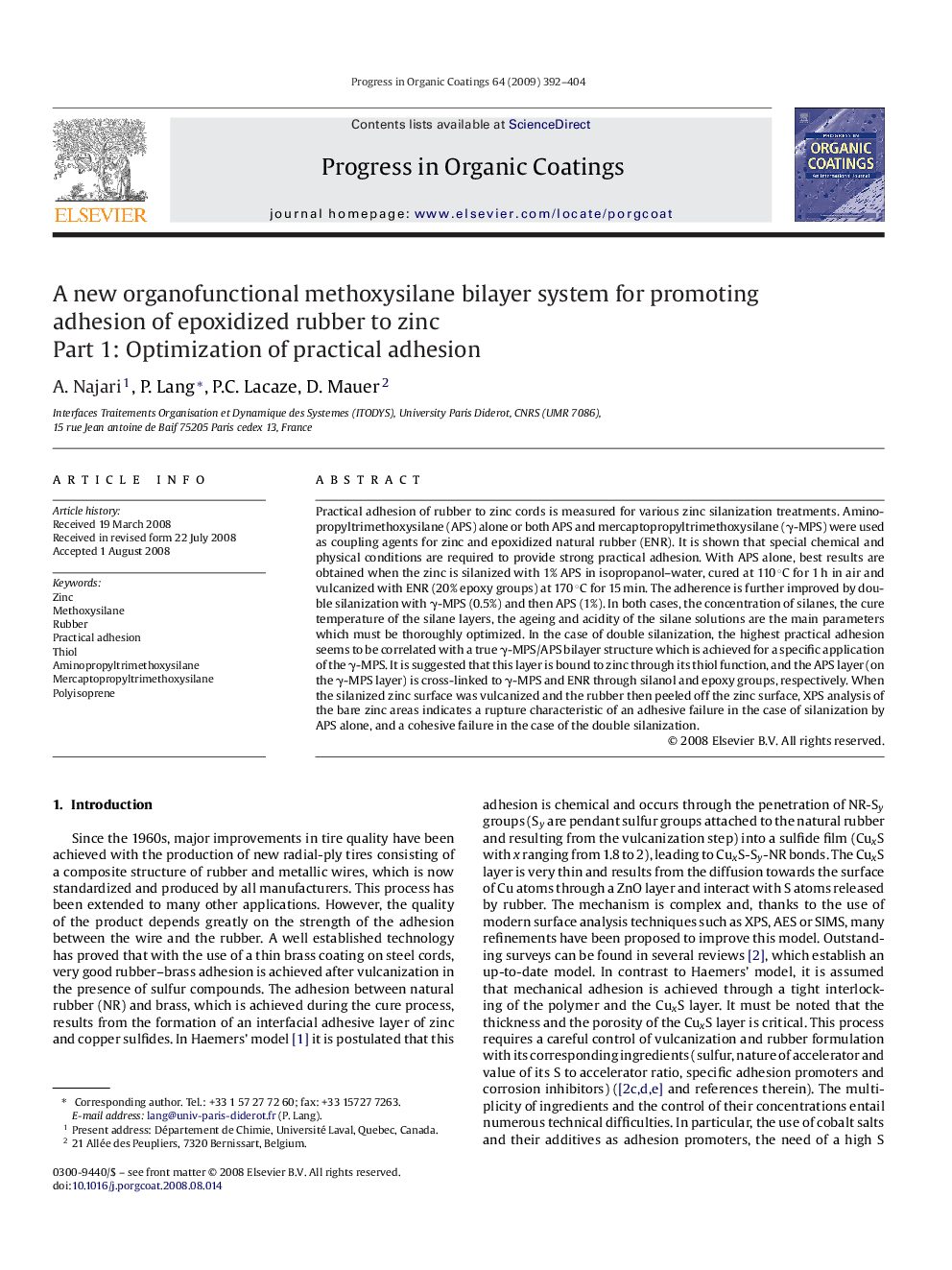| Article ID | Journal | Published Year | Pages | File Type |
|---|---|---|---|---|
| 693755 | Progress in Organic Coatings | 2009 | 13 Pages |
Abstract
Practical adhesion of rubber to zinc cords is measured for various zinc silanization treatments. Aminopropyltrimethoxysilane (APS) alone or both APS and mercaptopropyltrimethoxysilane (γ-MPS) were used as coupling agents for zinc and epoxidized natural rubber (ENR). It is shown that special chemical and physical conditions are required to provide strong practical adhesion. With APS alone, best results are obtained when the zinc is silanized with 1% APS in isopropanol-water, cured at 110 °C for 1 h in air and vulcanized with ENR (20% epoxy groups) at 170 °C for 15 min. The adherence is further improved by double silanization with γ-MPS (0.5%) and then APS (1%). In both cases, the concentration of silanes, the cure temperature of the silane layers, the ageing and acidity of the silane solutions are the main parameters which must be thoroughly optimized. In the case of double silanization, the highest practical adhesion seems to be correlated with a true γ-MPS/APS bilayer structure which is achieved for a specific application of the γ-MPS. It is suggested that this layer is bound to zinc through its thiol function, and the APS layer (on the γ-MPS layer) is cross-linked to γ-MPS and ENR through silanol and epoxy groups, respectively. When the silanized zinc surface was vulcanized and the rubber then peeled off the zinc surface, XPS analysis of the bare zinc areas indicates a rupture characteristic of an adhesive failure in the case of silanization by APS alone, and a cohesive failure in the case of the double silanization.
Related Topics
Physical Sciences and Engineering
Chemical Engineering
Process Chemistry and Technology
Authors
A. Najari, P. Lang, P.C. Lacaze, D. Mauer,
